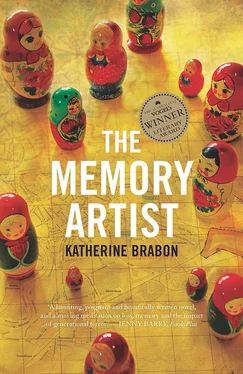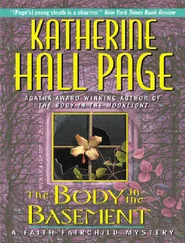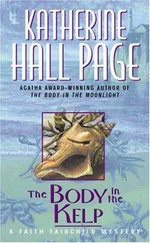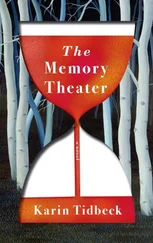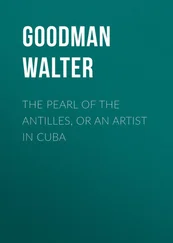Anya came back just before her birthday in March. We had a night at the Sukhanovs’ apartment, drinking and listening to music, arguing happily like always. After her return, Anya had a new sense of composure about her. I thought it was maybe the peace of those who have glimpsed what they want; for her, a way out. Confined to Moscow for her whole life, under her mother’s anxious cloud, in Leningrad she had stood for a while out of the shadow of that cloud.
Behind that composure was a new kind of inner urgency, a focused determination to leave the Soviet Union. She spoke more practically, about exit visas and potential jobs abroad. At the time I didn’t really take it seriously. To me, people didn’t leave because they wanted to, only when they were taken. Yura couldn’t get out. I couldn’t see how Anya would be able to get a visa—and, more than that, I didn’t believe she was really unhappy enough to want to go.
Early in the new year, 1989, Oleg asked me to visit him at his apartment. I’d never been there before. It was not far from Chkalov Street, part of the Garden Ring. The streetscape around me would have looked as it always did. Every winter was the same. Thin snow like loosely woven gauze, almost transparent, over the footpaths and tree branches; cars speeding by in a bright winter sun. As I walked to Oleg’s, a man walked past me holding flowers wrapped in newspaper, a copy of Pravda , carried high in the air. Up ahead, on a building bleached gravel-grey in the sun, a banner proclaimed glory to labour in red letters on a snow-white surface. Beneath the words were stars on one side, a hammer and sickle on the other.
Oleg met me at the entrance to the building and we took the elevator to the sixth floor. Walking along the hallway, we passed the kitchen. A young woman around my age stood in jeans and a long t-shirt, cooking at the stove. When she looked up, something hissed inside a pan on the hotplate. She said hello, turned back to the pan, shook it once or twice by the handle.
Oleg had two rooms in the apartment. The door opened into a living room, neat but crowded with books and ceiling-high piles of paper, like a replica of those in our apartment. Apart from the books and papers, there were only a few objects: a radio, an empty vase, both on a small square table on a piece of brown carpet. A small framed picture of a lake, and at least four hats, each hung in place on a wooden spoke near the front door.
For quite some time, I have been working on a sort of project of documentation, Oleg said. And it occurred to me recently that I should show you, or somebody, because otherwise—Oleg tapped three fingers to his temple—it does not really leave here.
We passed through the living room to the second of his rooms, which I had thought would be the bedroom. Yet it looked more like a study, with a large desk taking up most of the space apart from a couch that must have doubled as a bed. Oleg turned on the light. The desk was covered with papers and so were the walls. A great mass of black lines, letters and stars covered the sheets of white paper. I realised they were all maps.
The Gulag. Vot . There it is, Oleg said.
He nodded in answer to my hesitant step into the room. As I came closer, I saw names that were familiar to me in a distant way, as the names of childhood books or old relatives remain at once forgotten and known: Perm, Murmansk, Kem, Kolyma, Arkhangelsk, Vorkuta, Dudinka, Norilsk, Igarka, Tobolsk, Omsk, Novosibirsk, Karaganda, Mointy, Frunze, Samarkand, Krasnovodsk, Magnitogorsk, Chelyabinsk, Berezniki, Molotovsk, Kotlas, Totma, Yaroslavl, Kargopol, Tambov, Kharkov, Monchegorsk, and, far above the White Sea, the Solovetsky Islands.
Clustered in some areas, dispersed in others, were neatly drawn stars in black ink. Each star is a camp, Oleg explained. Or was.
Although the Gulag years were spoken of during glasnost as they never had been before, it was hard to truly see the past. One could not know if the old faces on the street were survivors or shoppers. They could be traumatised or they could just be tired of waiting in long queues for things bought only so they would not starve. Harder still to see in Moscow, metropolis of new concrete and renamed streets, of buildings that housed the sons and grandsons of the very system that endured throughout. I touched one area of smooth paper and thought, then, how invisible the past was in the city in which I lived.
We made a plan that night. We would go to the old camps in early May. I wanted to witness the remains myself, and it would help the historical research division of the Memorial Society to make a record of those sites of memory. It was important for Oleg, too. We stood together in front of the maps.
I need to see it, Pasha, he said.
I looked from the walls to Oleg standing next to me. He was reaching out with one arm. His wide, crinkled hand made a star on the map closest to him. It was a small star on the expanse of paper. It seemed to me that blindness was as powerful and terrible as silence, sight as important as speech. Stone and ground told as much as any words.
Oleg traced invisible lines across the maps. We will go from here to here, and all the way up to Solovetsky, Pasha. To see it. I am glad you’re coming. Oleg’s expression, as he looked at the maps, was never mine to describe.
I met with Mikhail Sergeyevich one more time before I left. We hadn’t met at all during the winter, perhaps because it was too cold to sit in the snowy parks, or because Anya was away. But it was spring now, and the city was recovering its green. He began talking almost straight away about the psychiatric history he thought might interest me. He seemed eager to talk, more lucid than when we spoke before the winter. I wondered whether he was feeling better than he had the previous time we spoke, or if it was just that he’d had more time to think about what he wanted to say. In any case, he spoke directly about the asylums.
I’ve got some information for you, he said as we walked slowly along the embankment that ran along Gorky Park and then to Neskuchny Garden. He began by telling me how, in the early nineteenth century, an asylum called All-Mourners had opened in St Petersburg.
Such an odd name, he said. I can’t work out why it was called that. The first proper study of the state of asylums in Russia was by Pavel Yakobi in Moscow in the late nineteenth century. Yakobi argued that the structures of society directly influenced the treatment of and attitudes towards the mentally ill. Which, as I’m sure you’ll understand, is very interesting to me, given the control I saw both within the psychiatric ward and outside it, exercised by my father and other officials. Yakobi warned of a widespread fear of an abstract madman and saw the proliferation of asylums across Russia as a symptom of society’s constructed fear of those deemed to be threatening, rather than as the proper treatment of ailments of the mind.
We left the embankment and walked into Neskuchny Garden. It was Moscow’s oldest park. Old summer pavilions and residences were scattered over hectares of green; you could see them in the traces of yellow and white and blue that dashed the grass. We walked around a few of the ponds, over the stone bridges. Mikhail Sergeyevich moved slowly.
There were different classifications of mental illnesses over the years, he continued. Some sound, nowadays, very dated or more like philosophical ailments than medical or scientific—conditions like over-intellectualisation or metaphysic intoxication . These were, perhaps, less physiologically provable instances of illness, and maybe more symptoms of dissatisfaction with the person’s condition—their role in life and society, their contribution, perhaps.
Читать дальше
